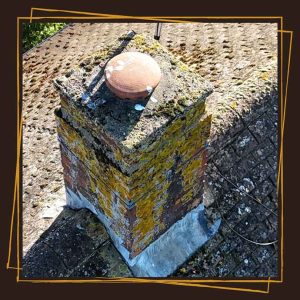C
Drone Inspection
Our drone chimney and rooftop inspection process revolutionises safety and efficiency in structural assessments.
Led by licensed drone operators, our thorough inspections eliminate the need for risky scaffolds, ensuring the safety of personnel while adhering to aviation regulations.
With meticulous planning and equipment checks, our drones capture high-resolution imagery and video footage of chimneys and rooftops, detecting potential hazards and structural issues with precision.
Real-time monitoring and obstacle avoidance features enhance safety during flight operations, while comprehensive data analysis enables us to provide detailed reports and actionable recommendations for maintenance and repairs.
Experience the future of structural assessments with our drone inspection services, prioritising safety and accuracy every step of the way.

Drone Inspection Process...
The process for a drone chimney and rooftop inspection offers a comprehensive solution for assessing structural integrity and potential hazards while eliminating the need for scaffolds. Here’s how it works, along with key safety factors:
Here’s an overview of the process:
Licensed Drone Operator: A licensed and experienced drone operator is essential for conducting chimney and rooftop inspections. They must hold a valid drone pilot license issued by the appropriate aviation authority, demonstrating their proficiency in operating drones safely and legally.
Preparation and Planning: Before the inspection, the licensed drone operator conducts a thorough site assessment and planning session. This includes reviewing airspace restrictions, obtaining necessary permits, and creating a detailed flight plan to ensure comprehensive coverage of the chimney and rooftop.
Equipment Check: The drone and all associated equipment undergo a meticulous pre-flight inspection to ensure they are in optimal working condition. Batteries are fully charged, and any necessary firmware updates are completed to ensure reliable performance during the inspection.
Safety Briefing: Prior to takeoff, the licensed drone operator conducts a safety briefing for all personnel involved in the inspection. This includes emphasizing key safety protocols, emergency procedures, and the importance of maintaining a safe distance from the drone during flight operations.
No Scaffolds Required: Drones eliminate the need for personnel to physically access the chimney or rooftop, reducing the risk of falls and injuries associated with working at heights. This enhances overall safety and eliminates the need for scaffolds or other elevated platforms.
Flight Execution: The licensed drone operator launches the drone from a safe location, ensuring it is clear of any obstacles or overhead hazards. The drone follows the predetermined flight path, capturing high-resolution imagery and video footage of the chimney and rooftop from various angles.
Real-Time Monitoring: Throughout the inspection, the licensed drone operator maintains real-time monitoring of the flight, ensuring smooth operation and adjusting the flight path as needed to capture specific areas of interest.
Obstacle Avoidance: Modern drones are equipped with obstacle avoidance sensors and intelligent flight modes that help prevent collisions with structures, antennas, or other rooftop features. This further enhances safety and minimizes the risk of damage to the drone or property.
Data Analysis and Reporting: Following the inspection, the collected data is analyzed to identify any structural issues or abnormalities. A detailed report is then generated, documenting findings and recommendations for maintenance or repairs.
By leveraging licensed drone operators for chimney and rooftop inspections, safety is prioritised through the elimination of scaffolds and reduced personnel exposure to potential hazards. This innovative approach provides accurate and actionable insights while enhancing overall safety and efficiency in structural assessments.
